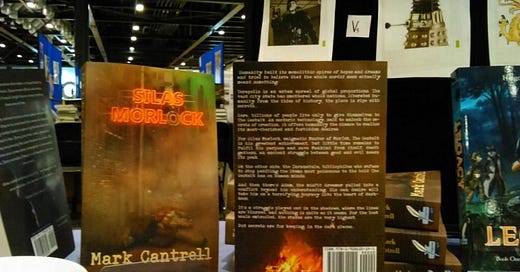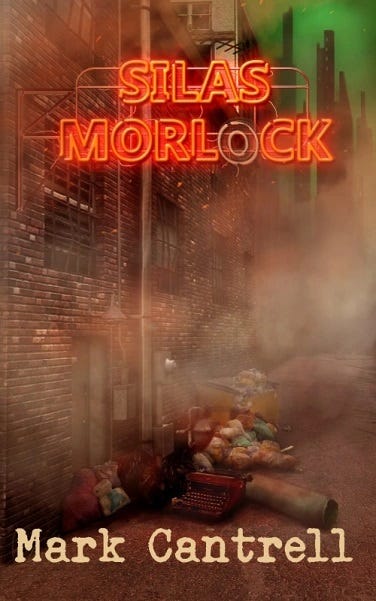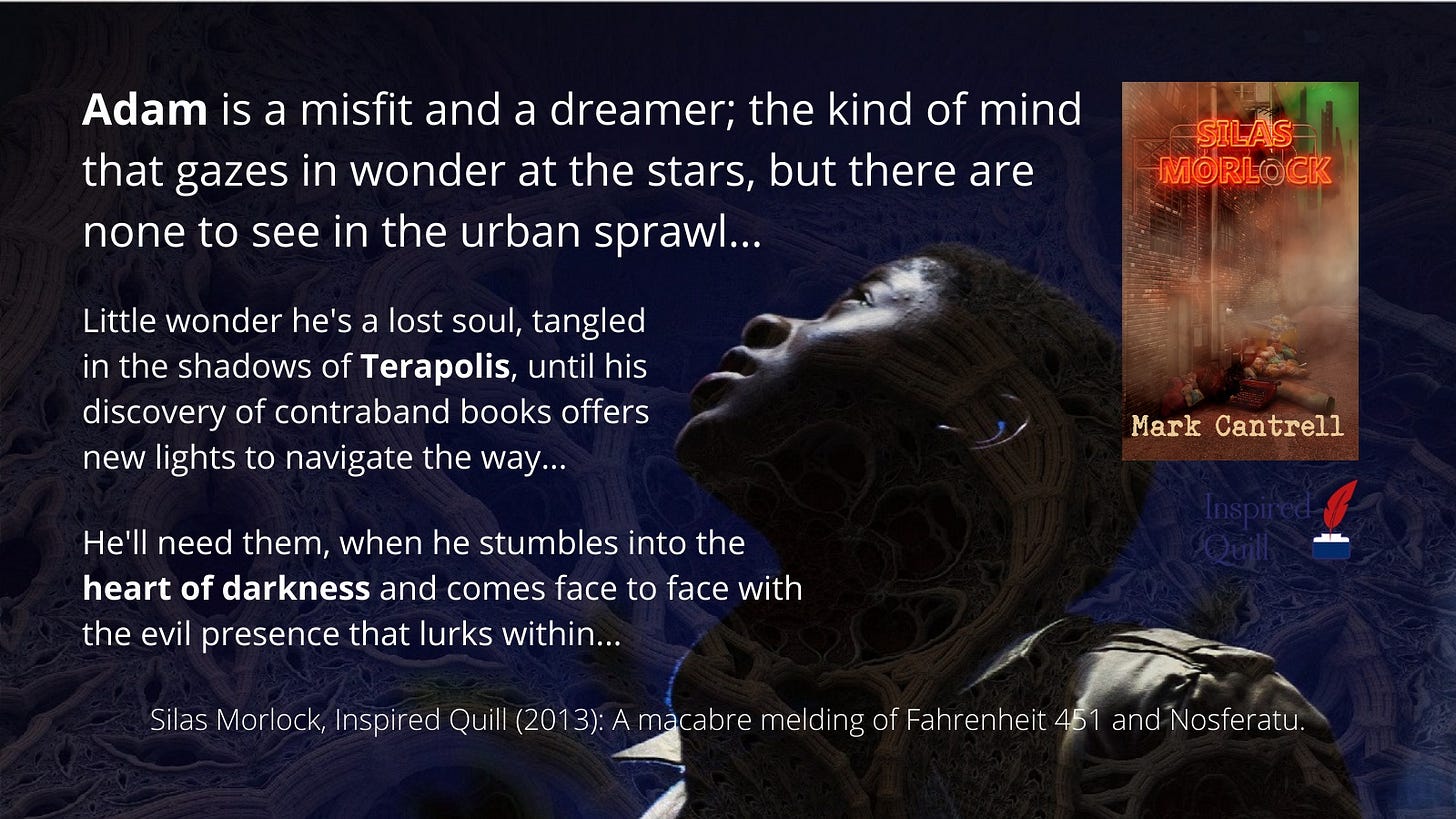Time waits for no morlock
In the deep shade, where evil lurks, time is all rather relative, so let's ponder its nature in this dark urban fantasy
REMEMBER what Einstein had to say about relativity and time?
Well, this has nothing to do with any of that, so put down that attractive blond, whoever she (or he) happens to be, and pay attention. This won’t take long. Relatively speaking.
I want to talk about the temporal relations of Terapolis, the sprawling world city in my novel, Silas Morlock. So, deep breath. Time isn’t the same there, you see. It’s measured, it passes, much the same as it does in our frame of reference, but that’s clocks for you, not time.
The city isn’t that old by our measure, but it feels ancient, a place where the weight of time immemorial presses the juice out of your soul. In Terapolis, so much more of that timey-wimey stuff has slipped through the neck of the hourglass than is tallied in the count of actual days, weeks, months, years since the city came into being.
The residents don’t notice, not really. They’re too busy leading their lives, such as they are, yearning for their next session within The Gestalt. Time is just the ticking hands of the clock, counting out the long emptiness between those longed-for periods of escape.
This mysterious and esoteric technology offers release from the darkness of this dread city, it shapes their lives, takes people out of themselves, gives them a reason to keep plodding along.
You might say that every day is Monday in Terapolis; The Gestalt is Friday concentrated and turbocharged. Little wonder, when you consider the environment. Yeah, it’s no place for people suffering with SAD.
For those of you who don’t know, Terapolis is a city of organic skyscrapers, clustered as dense as a primeval forest. Down in its depths, the light of the living day is absorbed long before it reaches ground so that humanity lives in a world with little natural light.
Neon and an eerie bioluminescence play havoc with the body clock. With no external reference – the sun, the moon – the body’s rhythms slip into a rough 25-hour cycle, but at least in Terapolis you don’t have to worry about time zones – or jet lag.
At this point it’s probably worth noting that Terapolis is a city of trans-continental proportions. As Caxton says in the book, Terapolis “absorbed the cities of history, swallowed entire nations, embalmed continents, and somewhere along the line we stopped noticing; we had The Gestalt by then”. And, of course, The Gestalt has us – body and soul.
Find out about Silas Morlock on Mark Cantrell, Author
Buy the book direct from the publisher, Inspired Quill
In some respects, Terapolis is The Gestalt; or to put it another the way The Gestalt is Terapolis. The city and the machinery of humanity’s penultimate release are fundamentally intertwined.
You can’t have one without the other. Both are the manifestations of an underlying reality external yet intrinsic to our own fabric of space and time. The Gestalt warps reality; it breaks the rules – all of them – and allows us to do the same. Well, Silas Morlock is a novel; that’s what novels do.
Lorelei isn’t far wrong when she tells Boris that The Gestalt offers a gateway to transcendence – and the scope to become like Gods. Human nature being what it is, dark gods are no doubt the order of the day.
We find ourselves in The Gestalt. Well, we find some thing (and maybe it finds us, too), and it’s different for every one of us; whatever it is, though, it keeps us coming back for more.
Of course, The Gestalt’s blessings come at a price – but if you want to know what it’ll cost you to release your soul, you’ll need to read the book.
For now, it’s enough to know that some of that price is the dreary truth of daily existence in Terapolis.
No wonder the city presses heavy with the weight of ages, but there’s a little more to it than the psychological burden of living in such an unearthly place. Sorry for the mind-fuck, but Terapolis really is an antediluvian city, even though its origins are scarcely more than a few decades gone.
The city, as a global phenomenon, isn’t that much older than Adam, the novel’s protagonist. I always envisioned him as pushing 30 (a bit of a slacker with a lot of growing up to do, too, but that’s another story). You wouldn’t expect him to recall the world as it was before.
People of an older generation just don’t have that excuse, but in their defence they are living in a preternatural environment.
Memory is a fickle critter at the best of times. In the city of The Gestalt, centuries of time have passed for every decade of lived experience. Caxton’s generation once dwelled in a world similar to our own, but in their subjective (relative) reality, living memory has dissipated almost beyond recall.
That’s the thing about time, wherever you are; it keeps its own pace. In Terapolis, you’ve got all the time in the world, rushing you headlong to that moment when there’s no time at all.
So, don’t look back, just make the most of those moments to hand until you can lose yourself again in The Gestalt.
On some level, the inhabitants feel it, this discord in the flow of time; a sense of life stretched beyond its natural vitality, of a soul diminished. Think of Bilbo, lamenting to Gandalf how life has come to feel like too little butter spread thin on the bread.
Not that many of them retain the capacity to articulate this sense of dissonance, of course, except as a need to hurl themselves back into The Gestalt. It’s a refuge for the lost, and the deeper we burrow into its promise the more lost we become. You just know, it can’t end well.
Okay, I admit it: underneath all the metaphysics, The Gestalt is a metaphor for consumerism, but there is a simple antidote. Caxton pushes the most powerful drug ever used by mankind. A veritable poison for The Gestalt, it breaks the hold it has on us; little wonder it had to be driven underground literally and metaphorically.
The stuff Caxton sells alters the mind, expands consciousness, transcends time, opens a channel to the dead; it feeds the soul and sets us free.
Luckily, living in the here and now or the real word, we don’t need to go find our fix in the shaded underbelly of our cities and towns, not like Adam going out of his wits as he searches for his dealer.
No, we can find this mind-altering material on every high street, in countless retail stores, online, in libraries, and on the shelves of like-minded friends.
Want to know the secret? Time is no object, we make our own. All we gotta do is grab a book and read. You might want to start with Silas Morlock. Let him light the way towards a wealth of worlds – and spark a fire in the forge of imagination.
MC
First published on Mark Cantrell, Author.
Copyright © January 2016. All Rights Reserved






